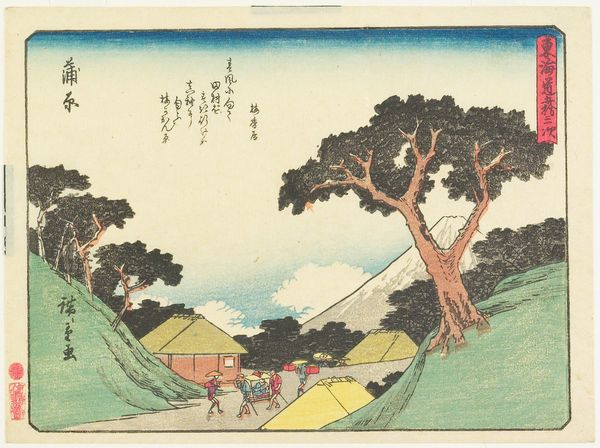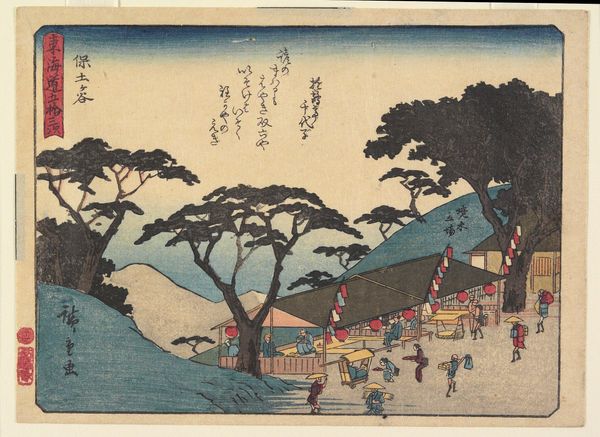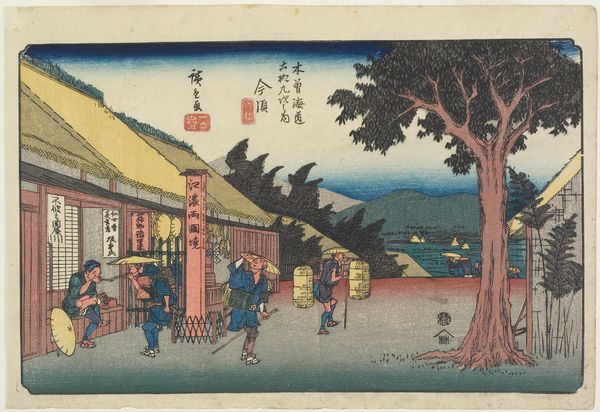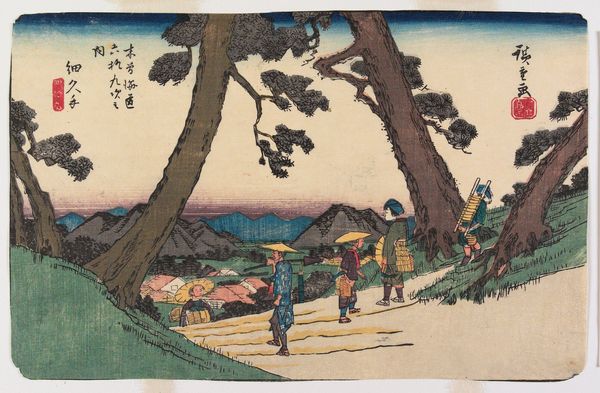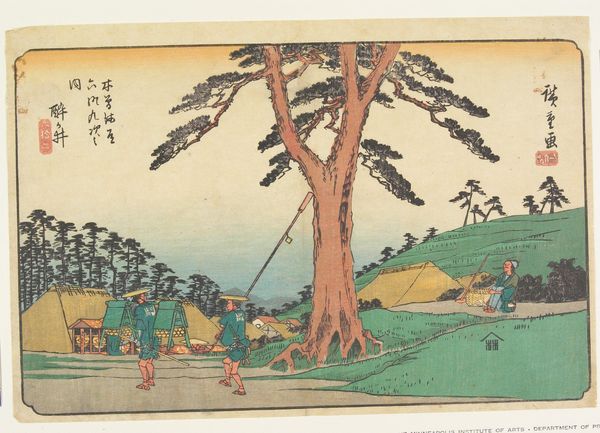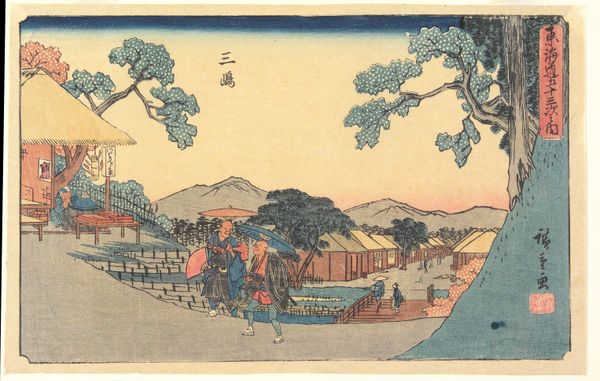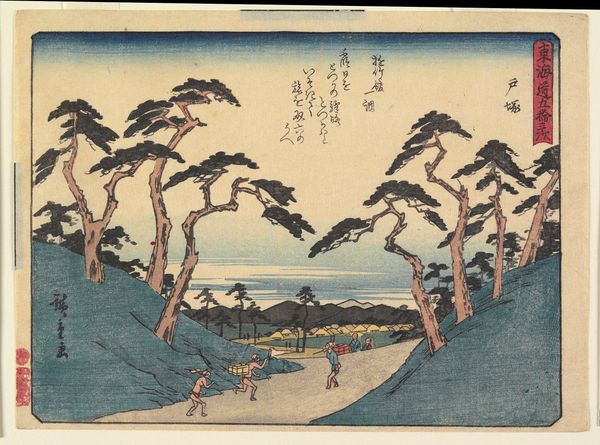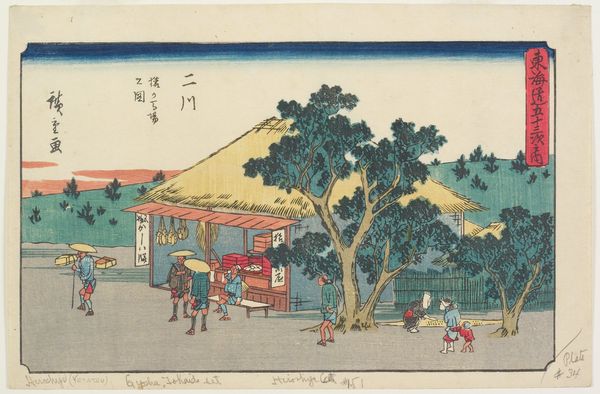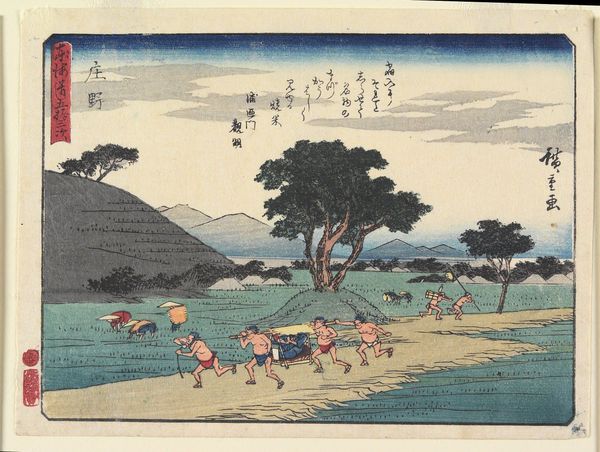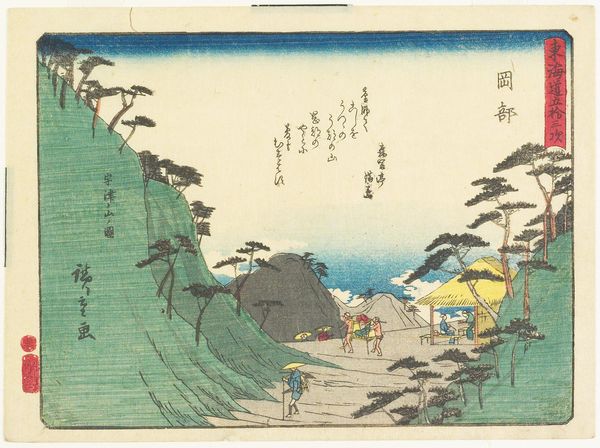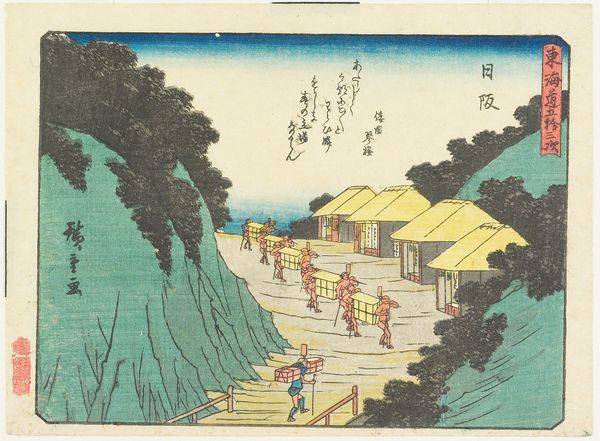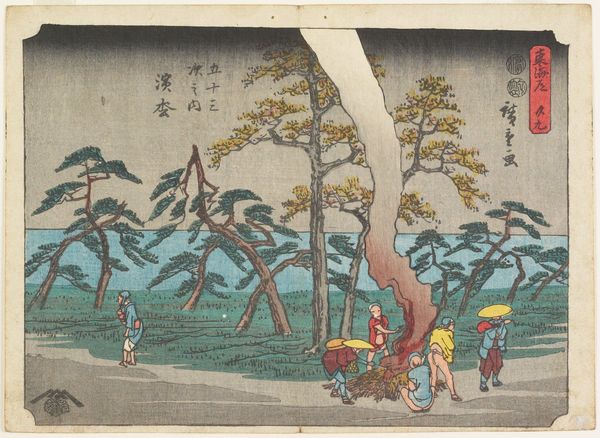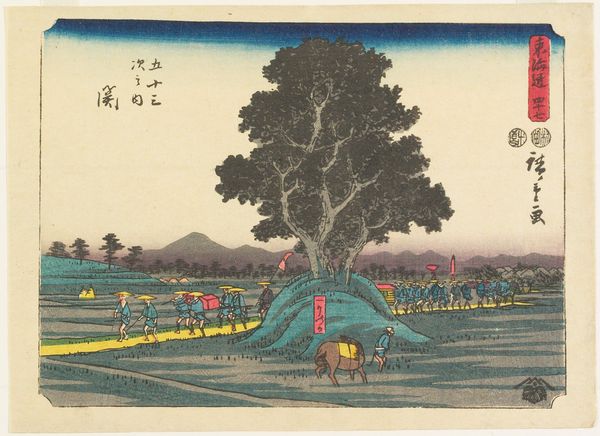
print, ink, woodblock-print
# print
#
landscape
#
ukiyo-e
#
ink
#
woodblock-print
#
orientalism
#
watercolor
Dimensions: 6 1/8 x 8 3/16 in. (15.6 x 20.8 cm) (image)6 5/8 x 8 7/8 in. (16.8 x 22.5 cm) (sheet)
Copyright: Public Domain
Utagawa Hiroshige created ‘Kanbara’ most likely in the 1830s using woodblock printmaking techniques. Notice how the composition is structured by two opposing hills in the foreground. The buildings and travelers are nestled in the center, between these inclines. The perspective in 'Kanbara' is especially interesting, aren't you intrigued by how the planes seem to flatten and stack? This visual strategy emphasizes surface over depth, reflecting a broader interest in Japanese art to distill and represent nature through symbolic forms rather than illusionistic space. The snow-capped peak of Mount Fuji sits perfectly in the background, framed by a tree. Consider how the semiotic system of signs, such as the depiction of Mount Fuji as a symbol of national identity and stability, would have informed the artwork's reception. Hiroshige’s arrangement of space destabilizes our perception, prompting a new way of thinking about landscape and representation. It is precisely in these formal choices that Hiroshige both preserves and challenges established meanings, inviting ongoing interpretation.
Comments
No comments
Be the first to comment and join the conversation on the ultimate creative platform.
